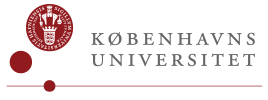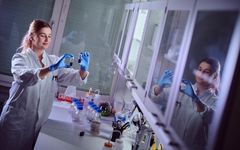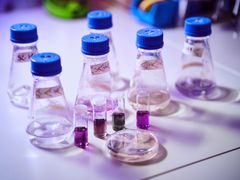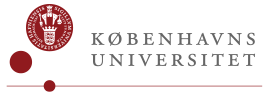Most colors are eco criminals: Here’s how to make purple greener
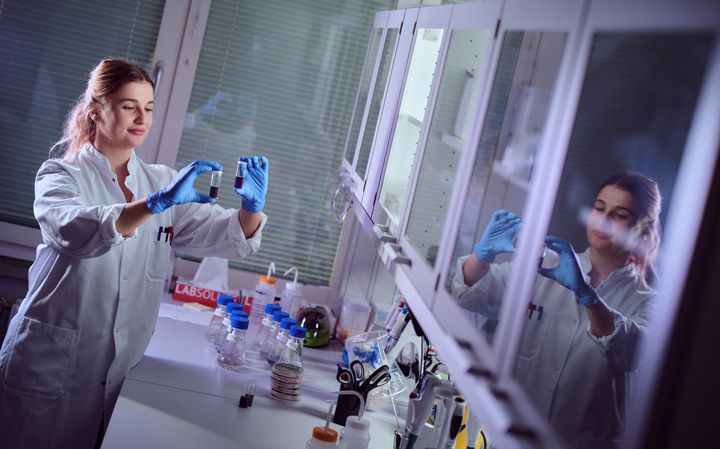
Have you ever wondered where the blue in your blue jeans comes from? Or the pink shades in your cosmetics kit? Or the paint on your bike?
The color industry is a colossus, with tens of billions in annual revenue. In 99 percent of cases, the colors of human creations are produced synthetically. Most of them are based on crude oil and created in processes that are extraordinarily harmful to the environment.
Natural pigments used today are not without problems either. Because they are extracted from plants, trees and insects, a significant amount of space and natural resources are needed to satiate market demand. Furthermore, the number of color shades one finds in nature is limited.
But there may just be a smarter, much more sustainable way for us humans to source an all-inclusive palette of colors. University of Copenhagen researchers, Assistant Professor Elizabeth H.J. Neilson and PhD student Annette Munch Nielsen, have set out to investigate this with the Danish company Octarine Bio.
"If, instead of using crude oil or exploiting large tracts of land, we can mimic nature's way of making colors, we could pave the way for a far more sustainable color industry. This is what we have set our sights on. We want to develop bio-based pigments in a new way – namely by moving the production of colors in nature into tanks of yeast," says Elizabeth H.J. Neilson of the Department of Plant and Environmental Sciences
Their plan to mimic nature
Wild plants, bacteria and other organisms produce an enormous array of chemical compounds, which among other things, create certain colors. In nature, this process usually takes place rather slowly. To accelerate it, the idea is to shift the production of compounds to another type of living organism.
"We can mimic nature by introducing certain plant or microorganism enzymes into yeast. Yeast will then act as a host organism for the formation of these compounds. With yeast as a host, we can produce the chemical more efficiently and thus in a larger amount than if it were in plants," explains Elizabeth H. J. Neilson.
The other big advantage is that it is easy to cultivate yeast on a large scale.
"Instead of planting hectares of trees, we can simply put yeast into a large fermentation tank. Here, the yeast will produce the substance, which is then quite easy to extract. We know it works, the challenge is getting the biological process to work efficiently enough to scale up production," says Nick Milne, chief scientific officer and co-founder of Octarine Bio, a leading Danish synthetic biology platform company.
We are missing purple, pink and blue
The second phase of the project is to manipulate the biosynthetic process so that new compounds can be produced to form new shades of colors.
Whereas nature abounds with red, yellow and green tones, many of the colors we use in daily products are rare. This is especially true with regards to shades of purple, pink and blue.
“There is a big gap in the market for natural pigments. So, the specific problem we want to tackle is: How do we create natural colors, but in a sustainable way, which also fits into a color spectrum that isn’t easy to find in nature. The chemical compounds we will work with meet all three criteria and can be easily integrated into our existing tryptamine fermentation manufacturing process” says Milne.
Multi-functional colors
Ultimately, the goal is not just to manufacture pigments, but to produce so-called bioactive colors –colors with multiple functions. The compounds from nature that the project will work with are derived from the substance tryptamine. These compounds have a range of additional properties, besides being able to create colors. Among other things, they are anti-bacterial, anti-viral and can even fight cancer.
“Nature builds plenty of smart functions into these chemical compounds used by organisms to survive. If our project succeeds, humans will be able to exploit some of these same useful properties,” says Elizabeth H. J. Neilson, whose research specializes in understanding exactly how these substances are produced and why they work the way they do.
Nick Milne adds:
“For example, imagine a piece of sportswear that has been dyed in an environmentally-friendly manner and is anti-bacterial at the same time. But there is also a wealth of commercial applications in the pharmaceutical and food sectors.”
The project will extend over the next three years and is supported by an Industrial PhD grant from Innovation Fund Denmark.
FACTS:
- The collaboration between the University of Copenhagen and Octarine Bio is a PhD project is supported by Innovation Fund Denmark.
- Denmark-based Octarine Bio specializes in using synthetic biology to develop molecules for the particularly the pharma industry.
Keywords
Contacts
Elizabeth H. J. NeilsonAssistant ProfessorDepartment of Plant and Environmental Sciences
Tel:+45 20 58 53 66en@plen.ku.dkNick MilneCo-founder / Chief Scientific OfficerOctarine Bio
Tel:+4593868068nickmilne@octarinebio.comMaria HornbekJournalistFaculty of Science - University of Copenhagen
Tel:+4522954283maho@science.ku.dkImages
About Københavns Universitet
Københavns Universitet blev grundlagt i 1479 og har i dag cirka 37.000 studerende og 10.000 ansatte – heraf flere end 5.000 forskere – og en omsætning på 9,4 milliarder kroner. 10 nobelpriser er blevet tildelt forskere med tilknytning til universitetet.
Subscribe to releases from Københavns Universitet
Subscribe to all the latest releases from Københavns Universitet by registering your e-mail address below. You can unsubscribe at any time.
Latest releases from Københavns Universitet
Fermentering gør havets grøntsager mere spiselige5.12.2025 06:18:59 CET | Pressemeddelelse
Tang har længe været hyldet som en bæredygtig superingrediens – men dens “fiskede” smag er en barriere for mange vestlige forbrugere. Nu viser et nyt studie fra Københavns Universitet, at fermentering med mælkesyrebakterier kan være nøglen til at få tangen til at glide ned.
P-piller kan forringe kvinders mentale trivsel2.12.2025 06:05:00 CET | Pressemeddelelse
Adgang til p-piller i ungdomsårene er forbundet med øget risiko for depression senere i livet. Især kan kvinder, der er genetisk disponeret for psykisk sygdom, risikere at blive ramt af bivirkningen. Det viser et nyt studie fra Københavns Universitet.
Psykologer: Derfor kan protester samle folk på tværs af politiske skel27.11.2025 09:18:05 CET | Pressemeddelelse
Hvordan kan mennesker med diametralt modsatte holdninger pludselig stå skulder ved skulder i protest? Det spørgsmål har et internationalt forskerhold undersøgt. Udgangspunktet er COVID-protesterne, som blev båret af tre samlende strategier.
Sådan bruger planter ingeniørprincipper til at trænge gennem hård jord27.11.2025 07:16:00 CET | Pressemeddelelse
Et internationalt forskerhold med Københavns Universitet, Shanghai Jiao Tong University og University of Nottingham i spidsen har opdaget, hvordan planterødder er i stand til at trænge igennem hård og tæt jord ved hjælp af et velkendt ingeniørprincip. Opdagelsen kan få stor betydning for fremtidens afgrøder i en tid, hvor presset på landbrugsjorden stiger.
Forskere advarer: Klimaforandringer kan udvide levesteder for malariamyg27.11.2025 06:00:00 CET | Pressemeddelelse
Hvis vi ikke begrænser klimaforandringerne, så risikerer vi, at malariamyg udbreder deres levesteder i Afrika betydeligt. Det vil udsætte mange hundrede millioner mennesker for en højere smitterisiko.
In our pressroom you can read all our latest releases, find our press contacts, images, documents and other relevant information about us.
Visit our pressroom